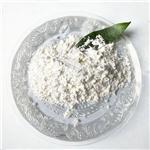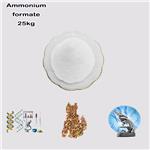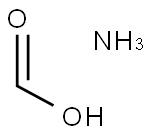The toxicity of Ammonium formate
May 13,2024
Description
Ammonium formate is an acidic salt and is generally soluble in water. The resulting solutions contain moderate concentrations of hydrogen ions and have pH's of less than 7.0. It is a white solid with a weak odor of ammonia. Sinks and mixes slowly with water. It has a role as a buffer and could be used as a mobile phase additive in high-performance liquid chromatography (HPLC). It is also suitable for liquid chromatography-mass spectrometry (LC/MS).

As a Preservatives
Ammonium formate (E 295) is presently listed in the EU Register of Feed Additives as a technological additive (functional group: preservatives) for use in feed for all animal species without a time limit, and it is subject to re-evaluation. Ammonium formate is authorized in food legislation as a food packaging additive for use in 'ingredients for manufacturing' intended to come in contact with food. The Joint FAO/WHO Expert Committee on Food Additives (JECFA) issued two opinions on ammonium formate, allocating an acceptable daily intake (ADI) of 0–3 mg/kg/body weight (bw) per day[1-2].
Safety
Accidental ingestion of the material may be damaging to the individual's health. Formate ions may directly act on the brain to produce convulsions. Large quantities administered to animals produced retinal lesions. Large doses of ammonia or injected ammonium salts may produce diarrhea and may be sufficiently absorbed to produce increased production of urine and systemic poisoning. Symptoms include weakening of the facial muscle, tremors, anxiety, and reduced muscle, and limb control. This material can cause eye irritation and damage in some persons.
This material can cause inflammation of the skin when in contact with some persons. The material may accentuate any pre-existing dermatitis condition. Skin contact is not thought to have harmful health effects. However, the material may still produce health damage following entry through wounds, lesions, or abrasions.
The material can cause respiratory irritation in some persons. The body's response to such irritation can cause further lung damage. Persons with impaired respiratory function, airway diseases, and conditions such as emphysema or chronic bronchitis may incur further disability if excessive concentrations of particulate are inhaled[3].
References
[1] Additives, EFSA Panel on and Products or Substances used in Animal Feed (FEEDAP). “Safety of ammonium formate (E& 295) for all animal species.” EFSA Journal 18 4 (2020).
[2] on Additives, EFSA Panel and Products or Substances used in Animal Feed (FEEDAP). “Scientific Opinion on the safety and efficacy of formic acid, ammonium formate and sodium formate as feed hygiene agents for all animal species.” EFSA Journal 13 5 (2015).
[3] https://datasheets.scbt.com/sc-210807.pdf
- Related articles
- Related Qustion
- Ammonium formate: Applications as Electrochemical Fuel Ionic Liquid and Safety May 27, 2024
Ammonium formate shows promise as an electrochemical fuel, but safety concerns arise in animal feed due to formamide presence, requiring further investigation for certain species.
- Ammonium formate: Applications and reactions May 23, 2023
Ammonium formate is obtained by neutralizing formic acid and ammonia. It is soluble in water and ethanol, and its aqueous solution is acidic.
- Applications of Ammonium Formate Nov 22, 2019
Ammonium formate, NH4HCO2, is the ammonium salt of formic acid. Ammonium formate is a colorless, hygroscopic, crystalline solid. Ammonium formate is a white solid with a weak odor of ammonia.
1,7-Dimethylxanthine is a naturally occurring alkaloid compound that can enhance alertness and reduce drowsiness.....
Feb 27,2025APIWhen highly refined, mineral oils do not cause any adverse effects. However, if the petroleum is not highly refined, it may include polycyclic aromatic hydrocarbons (PAHs), which are carcinogenic.....
May 13,2024Food AdditivesAmmonium formate
540-69-2You may like
Ammonium formate manufacturers
- Ammonium formate
-

- $1.00 / 1g
- 2025-10-27
- CAS:540-69-2
- Min. Order: 1g
- Purity: 99%
- Supply Ability: 1000kg
- Ammonium formate
-

- $0.00 / 25kg
- 2025-10-24
- CAS:540-69-2
- Min. Order: 25kg
- Purity: 98%min
- Supply Ability: 20 TONS
- Ammonium formate
-

- $29.00 / 10g
- 2025-10-22
- CAS:540-69-2
- Min. Order:
- Purity: ≥95%
- Supply Ability: 10g






